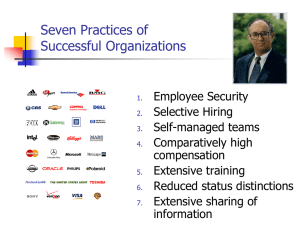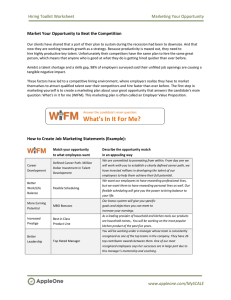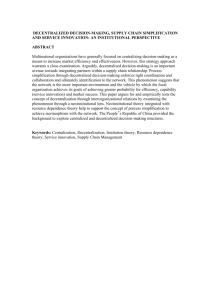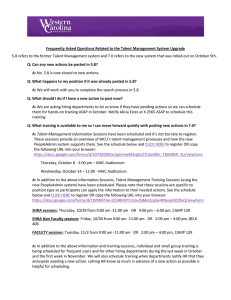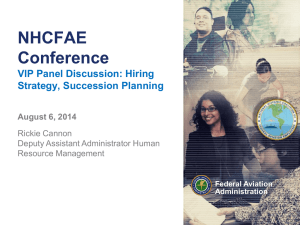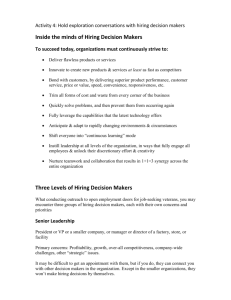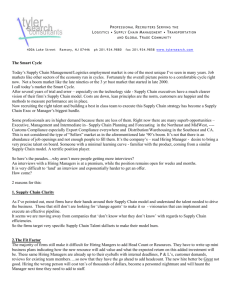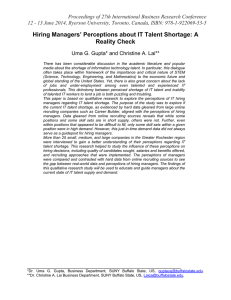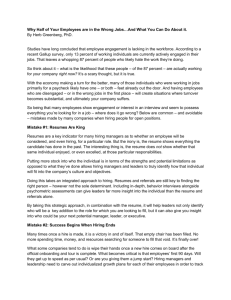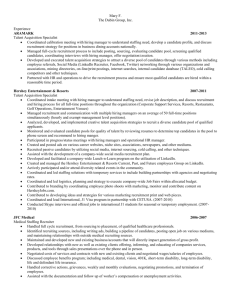Promoting a Positive Organizational Culture
advertisement
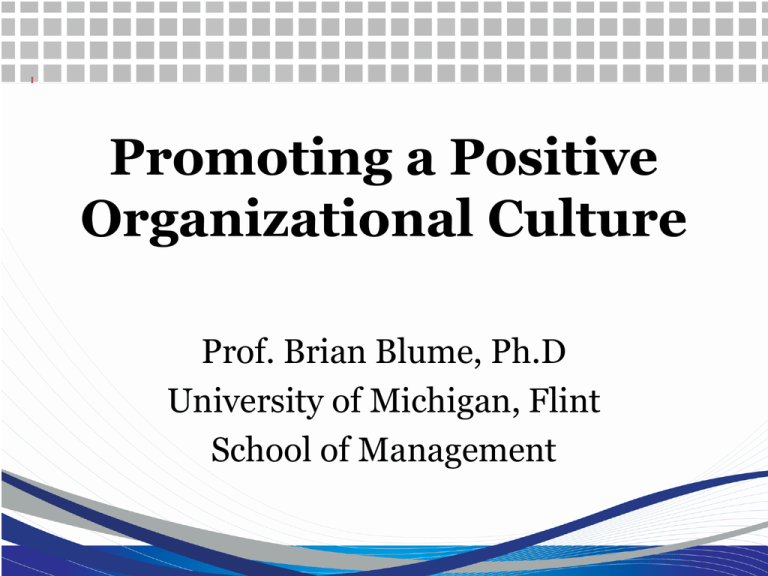
Promoting a Positive Organizational Culture Prof. Brian Blume, Ph.D University of Michigan, Flint School of Management What factors separate Successful vs. Unsuccessful Schools? Session Goals: Inform, Illuminate & Inspire 1. Make the business case for “people first” cultures 2. Explore the evidence which isolates the characteristics of high-commitment, “people first” cultures 3. Challenge you: How can you help create a higher performance culture at IAF? What is Culture? Culture is the set of values, beliefs, understandings, and ways of thinking that are shared by members of an organization Culture serves 2 basic functions: internal integration to integrate members so they develop a collective identity external adaptation to help the organization meet goals and deals with outsiders by responding rapidly to customer needs What is an Organization’s Most Important Asset? Exercise: Steak N Shake Restaurants recently completed an in-depth study comparing their stores that rank in the top quartile in sales and profitability and those stores that rank in the bottom quartile. What factors were consistently NOT different across stores? What consistent predictors or indicators of high financial performance did they find? The Steak N Shake Lessons What DID differentiate the stores on performance? (1)High customer service – measured by external raters (2)High employee engagement – measured by low turnover and surveys (3)Store manager (drives the first two) (4)Franchise ownership People are an Organization's Most Important Asset The central business challenge is recruiting, motivating, and retaining committed managers and employees Engaged / Committed employees: Work harder Work smarter Are better citizens Leave less and attract others like them “If people are our most valuable asset, I say we sell them.” Jerry Seinfeld 100 “Best To Work for” vs. Overall Stock Market 1998-2007 Seven Key Management Practices (Pfeffer & Veiga, 1999) 1. 2. 3. 4. 5. 6. 7. Commitment to Talent Development Decentralized decision-making Reduced status barriers Extensive sharing of information Relatively high and performance-based pay Employment security Selective hiring using effective methods Commitment to Talent Development What if we train all these people and they leave? What if we don’t and they stay?” Sends signal of investment Creates environment of growth and ideas and learning Development Means More Than Training Candid feedback & coaching Mentoring from someone “in the loop” Job experiences Decentralized decision-making Incredible motivational power of control & ownership & Commitment Utilize Self- managed teams to increase responsibility & accountability to peers Discretion to help students learn and do what is right What decisions could someone else make? Reduction of Status Differences Symbols- language and labels, physical space, dress Minimize wage differentials across job levels Perceptions of Fairness influence behavior Look for group and organizational rewards that prompt sense of mutual and shared interest Sharing information Key to developing high-trust culture Do you know how the organization is doing: financial performance, strategy, operational goals, student outcomes? Employees desire Prompt and ample feedback Some form of input – the opportunity to be heard Relatively High Pay based on Organizational Performance Surprise: Relatively high pay yields attraction and retention (Obviously, not really a surprise) Be as transparent as possible with performance criteria Individual incentives can work in the right context, but may be tricky and dysfunctional Look for group and organizational incentives Higher pay can potentially lower labor costs (via higher productivity & lower turnover) Employment Security The case for it includes: encourages innovation discourages layoff thinking incents more careful hiring creates longer-term perspectives Does not mean keep low performers -- but all leavers go with respect and dignity Challenges conventional wisdom Top employees ask: Is there a place for me to be promoted to within the organization? Selective Hiring How to attract more applicants? Need to be more than great place to work – need to be known as great place to work Hire for fit – Exceptional results with ordinary people. How do you determine fit? What values & skills are key to the position & organization? Broaden input on hiring decisions (e.g., fellow employees, customers) Understand the evidence on selection predictors How would you rate IAF on these Practices? Why? 1. 2. 3. 4. 5. 6. 7. Commitment to Talent Development Decentralized decision-making Reduced status barriers Extensive sharing of information Relatively high and performance-based pay Employment security Selective hiring using effective methods Lessons from Culture Change Must begin by questioning basic assumptions of thinking behind current behavior and practices Culture should align with the vision, mission, strategies and goals of the organization Policies and procedures should be consistent with desired culture change Involve employees Culture change requires a lot of time and effort to overcome resistance
